The sources of drinking water (both tap and bottled water) include rivers, lakes, streams, ponds, reservoirs, springs, and wells. As water travels over the land or through the ground, it dissolves naturally-occurring minerals and, in some cases, radioactive material, and can pick up substances resulting from the presence of animals or from human activity. Microbial Contaminants, such as viruses and bacteria, that may come from sewage treatment plants, septic systems, agricultural livestock operations and wildlife. Pesticides and Herbicides, that may come from a variety of sources such as agriculture, urban stormwater runoff and residential uses. Inorganic Contaminants, such as salts and metals, that can be naturally-occurring or result from urban stormwater runoff, industrial, or domestic wastewater discharges, oil and gas production, mining, or farming. Organic Chemical Contaminants, including synthetic and volatile organic chemicals, that are by-products of industrial process and petroleum production, and can also come from gas stations, urban stormwater runoff and septic systems. Radioactive Contaminants, that can be naturally-occurring or be the result of oil and gas production and mining activities. In order to ensure that tap water is safe to drink, the DEP and EPA prescribe regulations that limit the amount of certain contaminants in the water provided by public water systems. Food and Drug Administration (FDA) and the Massachusetts Department of Public Health regulations establish limits for contaminants in bottled water that must provide the same protection for public health.
